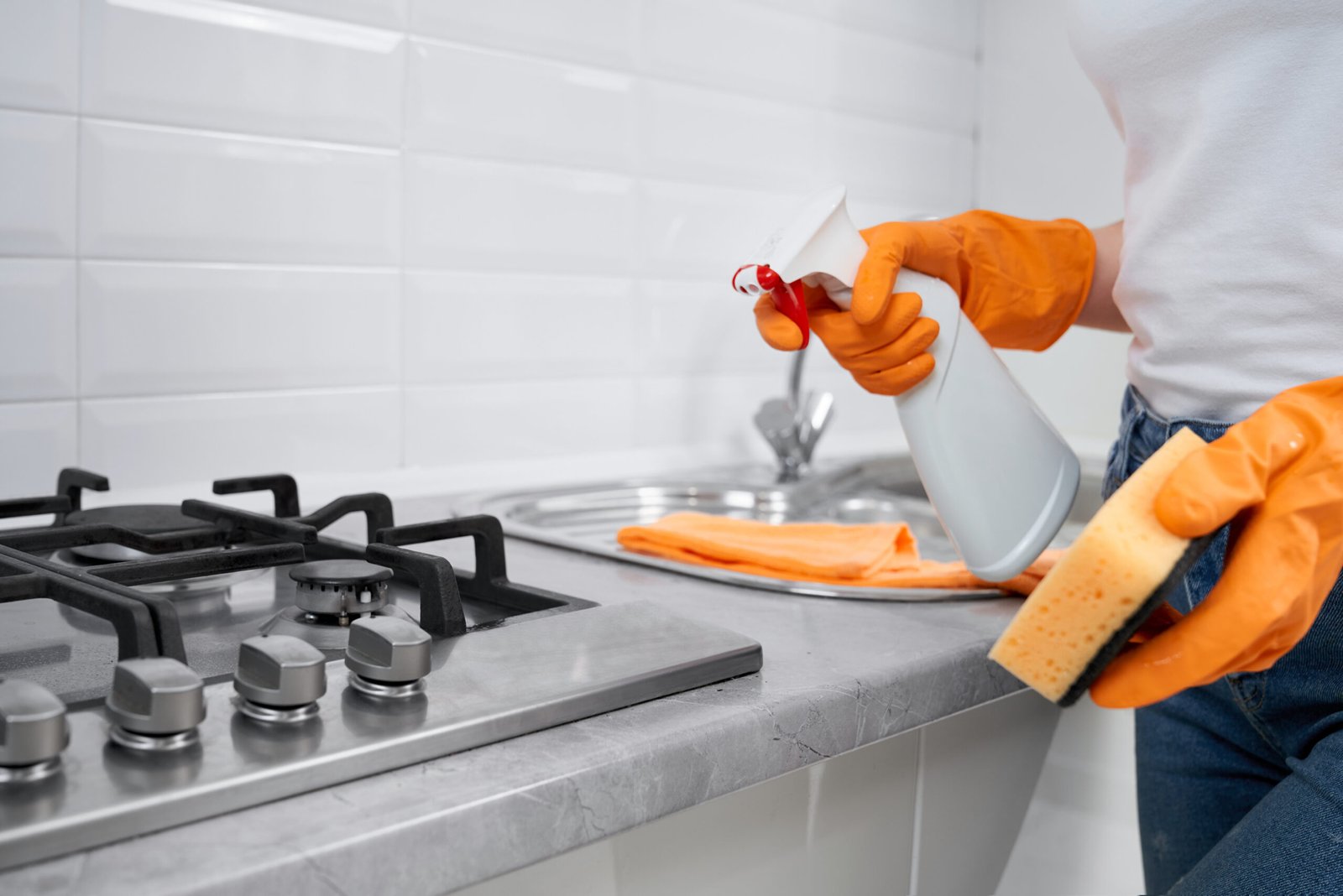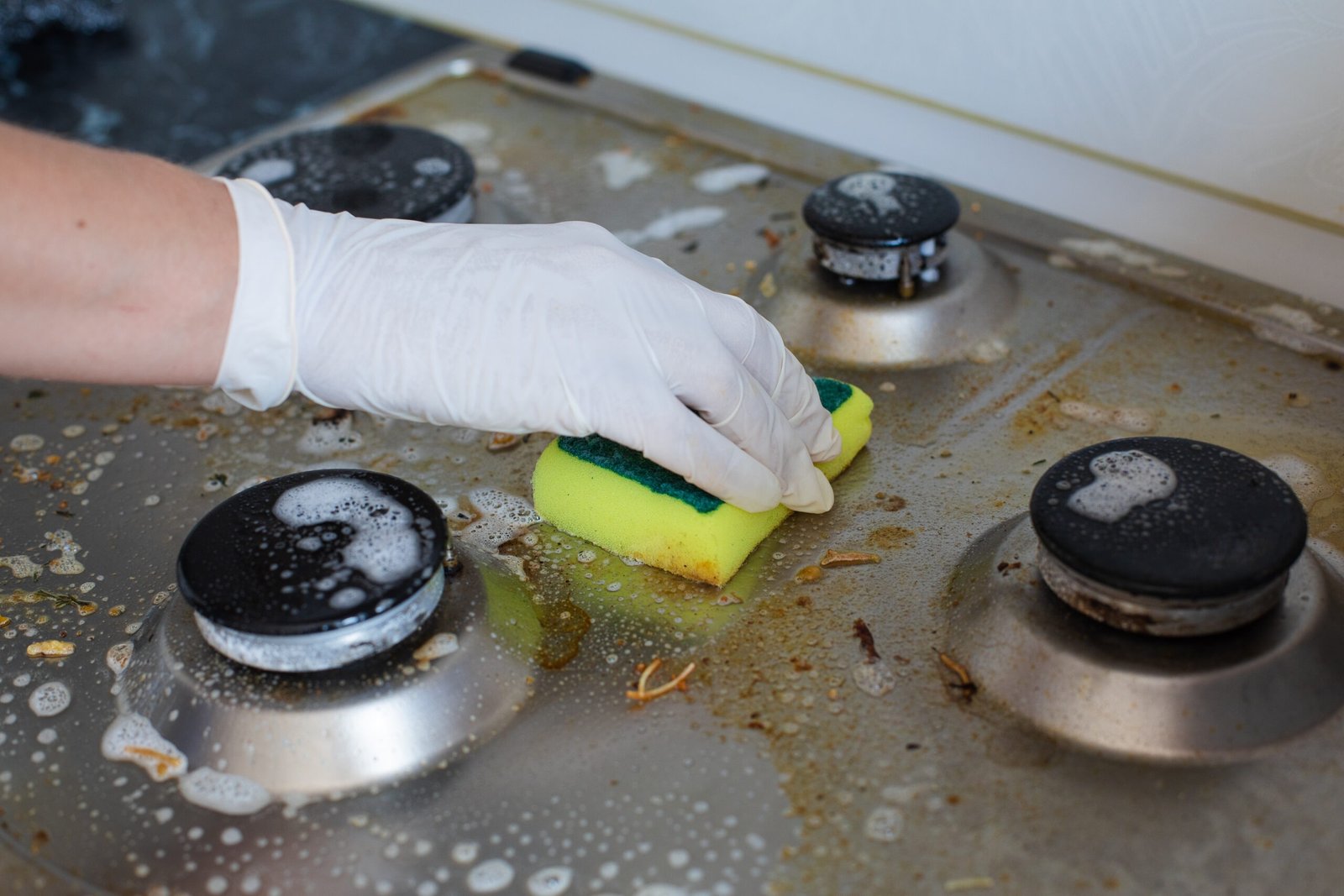
welcome to the new blog post, in this blog post, I will help you how to remove oil and grease stains from the kitchen.
The kitchen is the heart of every home, Where people cook food for themselves. Even though cooking may be enjoyable, oil and grease stains often remain on kitchen surfaces and leave a lasting impression. Whether you’re an avid home cook or someone who loves to cook, we’ve all had to battle these tough stains.
Don’t worry I understand the frustration that comes with stubborn oil and grease stains in the kitchen. I will help you in the field of how to remove oil and grease stains and also I will share proven techniques to effortlessly remove oil and grease stains, leaving your kitchen sparkling clean.
Understanding the Culprits: Types of Oil and Grease
Before starting the removal process, it is important to understand how to remove oil and grease stains.
Cooking oil, butter and grease are examples of oil-based materials that seep into porous surfaces and leave behind tough stains that are difficult to remove with water alone.
These stains can attract dirt and dust, which can aggravate the problem over time. Therefore, to prevent kitchens from getting spoiled by oil and grease stains, it is important that you take care of your kitchen very carefully.
Cooking Oils
The primary perpetrators are cooking oils, it is obtained from vegetables and sunflowers. Apart from adding flavour to our food, these oils can also leave difficult stains.
Butter
The indulgent addition to many recipes, butter, with its creamy consistency, can solidify on surfaces, creating stubborn stains that demand specialized attention.
Food Grease
Edible grease is a mixture of cooked, oily components and their leftovers. These residues have the potential to settle over time and form tough stains that take away the charm of our kitchen.
Identifying the characteristics of those responsible is the first step in creating a removal plan that works. Using this information, we may modify our cleaning strategy to effectively tackle any kind of stain, guaranteeing a comprehensive and fruitful cleaning operation.
Now that we are aware of our enemies, let’s examine the cleaning materials arsenal that will support our campaign for kitchen cleanliness.
Tools and Materials:
To effectively remove oil and grease stains from your kitchen, you’ll need the following tools and materials:
| S.NO. | Tools and Materials |
| 1. | Dish Soap and Warm Water |
| 2. | Baking Soda |
| 3. | White Vinegar |
| 4. | Lemon |
| 5. | Hydrogen peroxide |
| 6. | Microfiber cloths or paper towels |
| 7. | Scrub brush |
Remove oil and grease stains, step-by-step guides.
Now, let’s explore step-by-step methods to remove oil and grease stains from kitchen surfaces:
1. Immediate Action
For immediate action against oil and grease stains on kitchen surfaces, you can immediately blot off excess oil with a paper towel, sprinkle baking soda to soak up the grease and scrub gently with a soft brush.
Make a mixture of warm water and dish soap, use it to scrub the stain and rinse thoroughly. If necessary, apply a solution of equal amounts of water and white vinegar and repeat the process until the stain is removed.
Consider a kitchen degreaser for stubborn stains, use protective mats and clean surfaces regularly with a mild dish soap solution.
2. Dish Soap Magic

Start with the basics. Mix dish soap with warm water to get a soapy mixture. This mild solution works well for minor stains and won’t harm your surfaces. Let it sit on the stain for a minimum of fifteen minutes after applying it. The grease will be broken down by the soap, making it easier to remove with a cloth.
3. Baking Soda Scrub
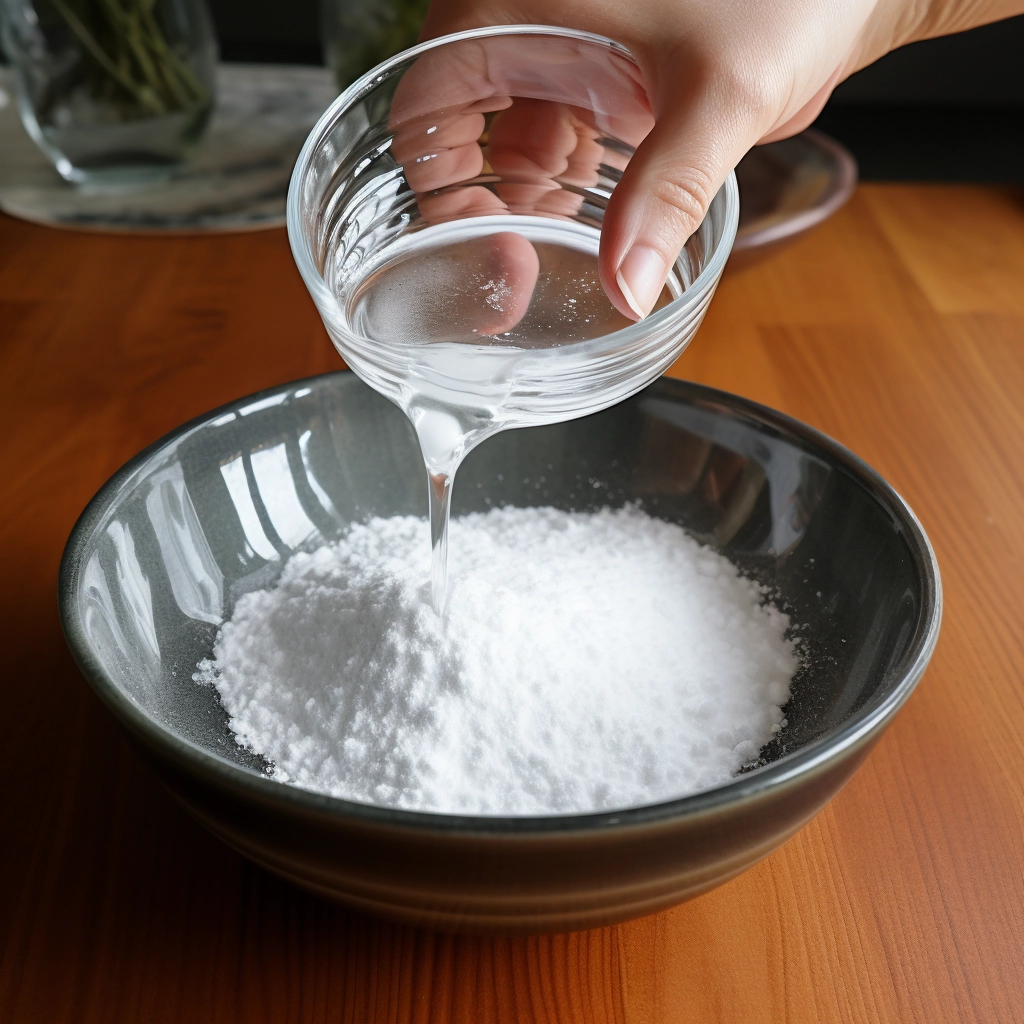 Baking soda is a mild abrasive that’s well-known for its many cleaning uses. Grease and oil stains can be easily removed without causing surface scratches. Use baking soda and water to produce a paste for more stubborn stains. Use a gentle brush or sponge to scrub the discoloured area gently. This technique is quite effective and doesn’t harm different types of surfaces.
Baking soda is a mild abrasive that’s well-known for its many cleaning uses. Grease and oil stains can be easily removed without causing surface scratches. Use baking soda and water to produce a paste for more stubborn stains. Use a gentle brush or sponge to scrub the discoloured area gently. This technique is quite effective and doesn’t harm different types of surfaces.
4. Vinegar Solution
Mix equal parts white vinegar and water. Apply the solution to the stain and let it sit for 20 minutes. Vinegar’s acidic properties will cut through the grease. Wipe away the solution with a clean cloth.
5. Lemon Freshness
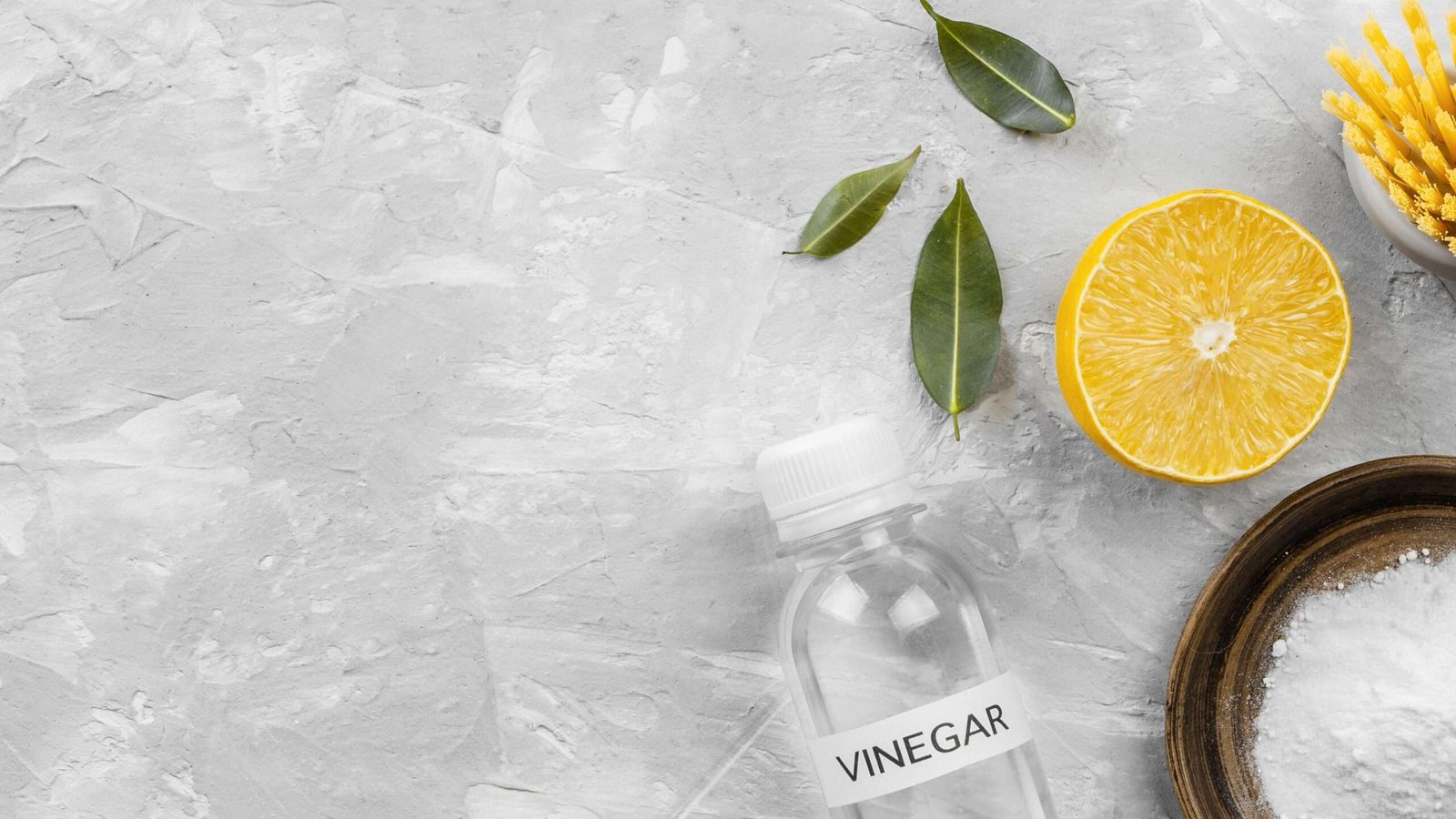 The natural acidity of lemons helps break down grease. Plus, the refreshing scent leaves your kitchen smelling clean. Cut a lemon in half and rub it over the stain. The lemon’s natural acidity will help dissolve the grease. Rinse the area with water and pat it dry.
The natural acidity of lemons helps break down grease. Plus, the refreshing scent leaves your kitchen smelling clean. Cut a lemon in half and rub it over the stain. The lemon’s natural acidity will help dissolve the grease. Rinse the area with water and pat it dry.
5. Hydrogen peroxide
it can also be a powerful ally in the battle against stubborn oil and grease stains in the kitchen. This versatile solution not only acts as a disinfectant but also serves as an effective stain remover, breaking down and lifting away tough stains.
6. Microfiber cloths or paper towels
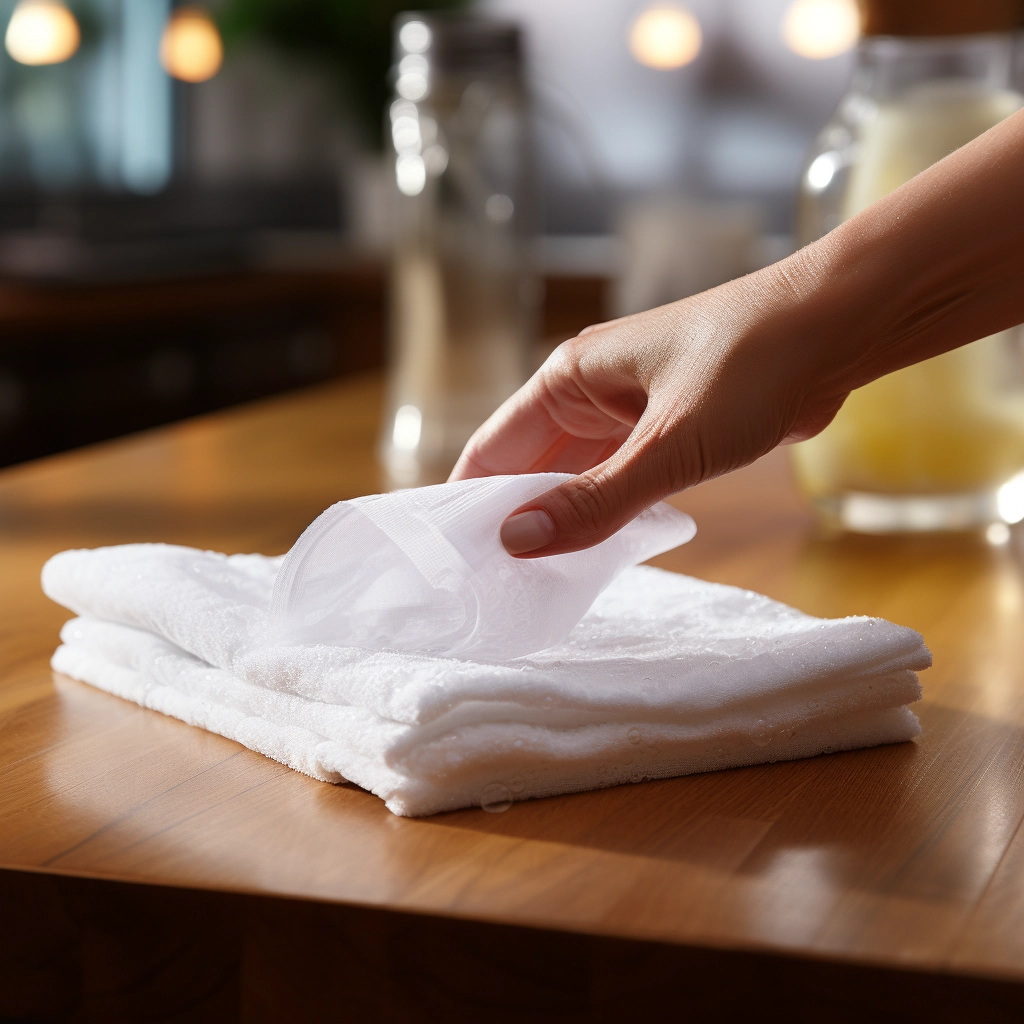 Microfiber cloths are highly absorbent, making them ideal for soaking up spills and wiping away liquid residues. This is particularly beneficial when dealing with oil and grease stains, as the cloth can effectively absorb and lift the substances from surfaces.
Microfiber cloths are highly absorbent, making them ideal for soaking up spills and wiping away liquid residues. This is particularly beneficial when dealing with oil and grease stains, as the cloth can effectively absorb and lift the substances from surfaces.
7. Scrub and cleaning brush.
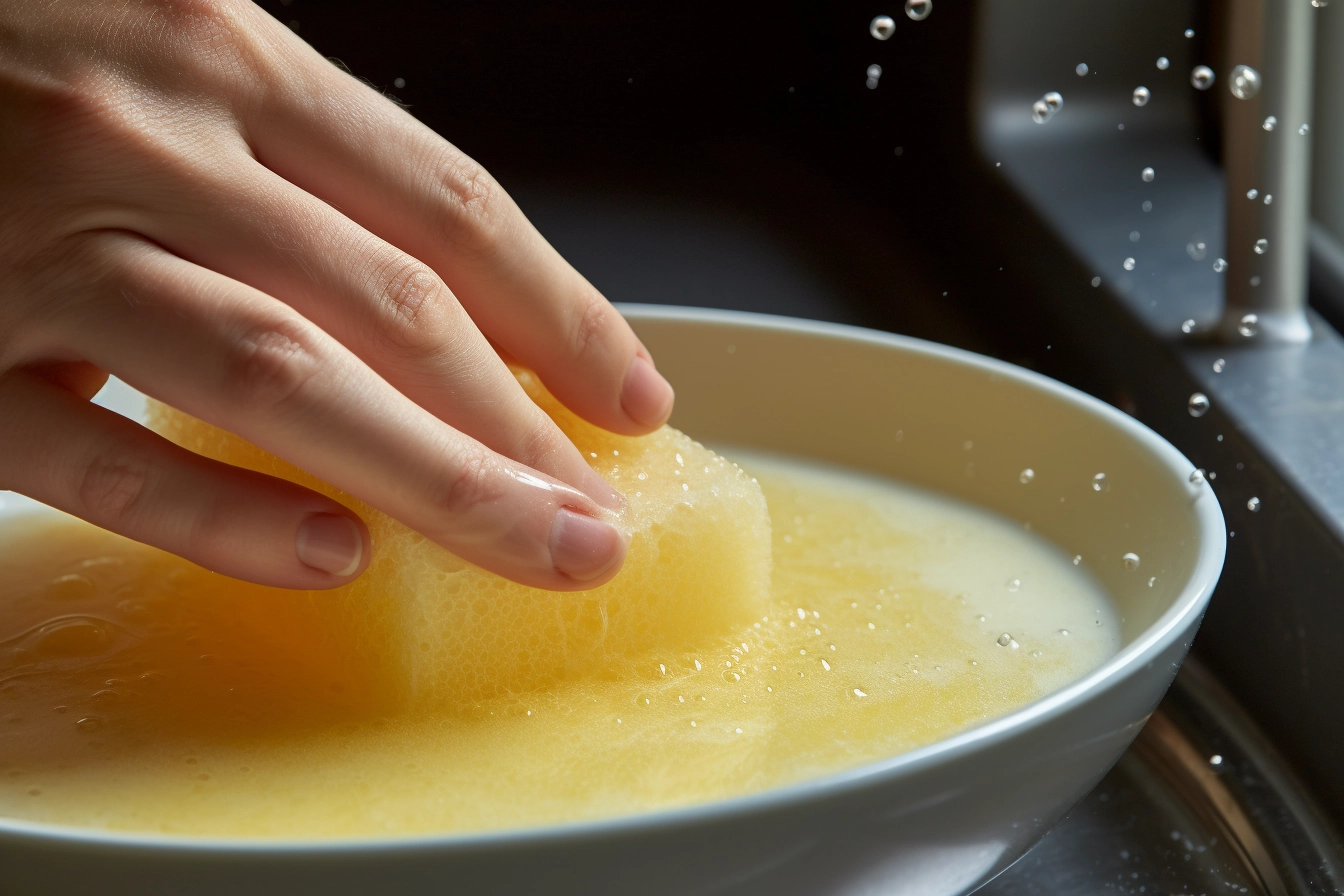 In the battle against stubborn kitchen stains, the humble scrub brush emerges as a reliable and effective tool. Whether you’re dealing with grease, grime, or baked-on residue, a well-chosen scrub brush can be a game-changer in achieving a spotless and hygienic kitchen.
In the battle against stubborn kitchen stains, the humble scrub brush emerges as a reliable and effective tool. Whether you’re dealing with grease, grime, or baked-on residue, a well-chosen scrub brush can be a game-changer in achieving a spotless and hygienic kitchen.
Conclusion
Although oil and grease stains are frequently seen in kitchens, they may be successfully removed from a variety of surfaces by using the proper methods and supplies. You can maintain a clean and welcoming kitchen by using the easy-to-find household goods and the step-by-step instructions provided in this blog. Always treat stains as soon as possible, and always test a cleaning solution on a tiny, discrete part of the surface before using it on the entire thing.
In the pursuit of a spotless kitchen, remember the importance of immediate action. Tackling stains promptly can make the difference between an effortless clean-up and a prolonged battle. Whether you opt for the simplicity of dish soap and warm water or the natural prowess of baking soda and lemon, each method holds its own charm in the fight against culinary blemishes.
FAQs
1. Can I use dish soap to remove oil stains from my kitchen surfaces?
Yes, dish soap can be effective in breaking down oil and grease stains. Mix it with warm water and apply it to the stain for best results.
2. Are commercial stain removers safe for all surfaces?
It’s crucial to check the product labels and ensure compatibility with your specific surfaces. Some may be abrasive and not suitable for certain materials.
3. How often should I clean my kitchen surfaces to prevent oil and grease stains?
Regular cleaning is key. Wipe down surfaces after each cooking session and perform a more thorough cleaning at least once a week.
4. What’s the best way to clean stainless steel appliances without causing damage?
Use a mild detergent or a mixture of vinegar and water. Avoid abrasive cleaners that can scratch the surface.
5. Is it possible to remove old, set-in grease stains?
While challenging, it’s possible. Apply a mixture of baking soda and water, let it sit, and scrub gently. also, you can use Hydrogen peroxide as needed.

